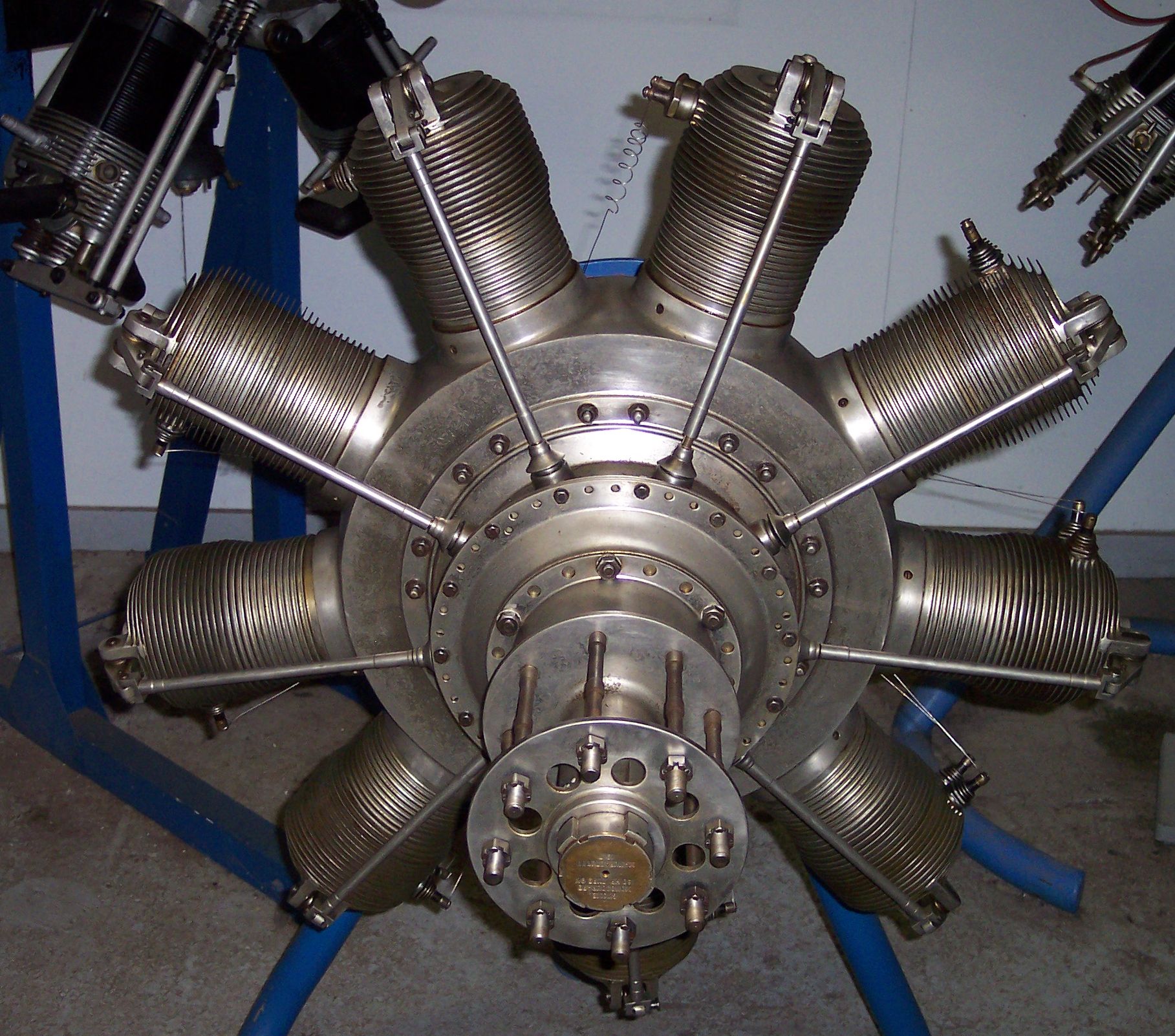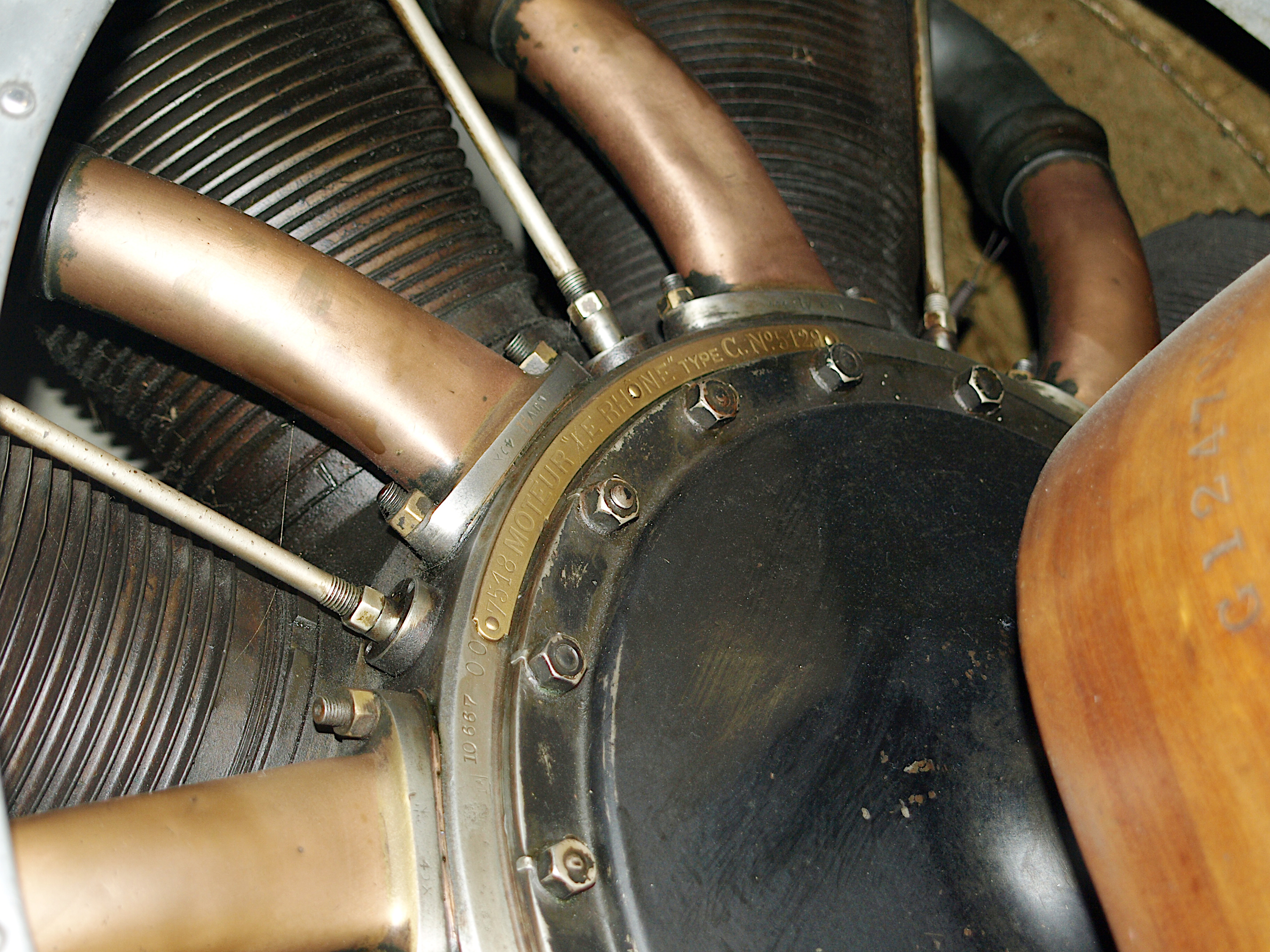|
Gnome Et RhĂŽne
Gnome et RhĂŽne was a major French aircraft engine manufacturer. Between 1914 and 1918 they produced 25,000 of their 9-cylinder Delta and Le RhĂŽne 110 hp (81 kW) rotary designs, while another 75,000 were produced by various licensees. These engines powered the majority of aircraft in the first half of the war, both Allied designs as well as German examples produced by Motorenfabrik Oberursel. In the post-war era they started a new design series originally based on the Bristol Jupiter, but evolving into the excellent twin-row, 1,000 hp-class (750 kW) Gnome-RhĂŽne 14K ''Mistral Major'' radial, which was likewise licensed and used around the world during World War II. They were a major supplier of engines to the German ''Luftwaffe'', producing both their own designs as well as German ones under licence. Their factories were the target of highly accurate bombing, knocking them out of the war. The company was nationalized as a part of Snecma in 1945, but the ... [...More Info...] [...Related Items...] OR: [Wikipedia] [Google] [Baidu] |
Snecma
Safran Aircraft Engines, previously Snecma (''SociĂ©tĂ© nationale d'Ă©tudes et de construction de moteurs d'aviation'') or Snecma Moteurs, is a French aerospace engine manufacturer headquartered in Courcouronnes and a subsidiary of Safran. It designs, manufactures and maintains engines for commercial and military aircraft as well as rocket engines for launch vehicles and satellites. Some of its notable developments, alone or in partnership, include the Dassault Rafale's M88 engine, the Concorde's Olympus 593, the CFM56 and CFM-LEAP for single-aisle airliners, as well as the Ariane 5's Vulcain engine. The company employs around 15,700 people across 35 production sites, offices, and MRO facilities worldwide and files an average of nearly 500 patents each year. Safran Aircraft Engines also notably operates two joint ventures with GE Aerospace: CFM International, the worldâs leading supplier of commercial aircraft engines, and CFM Materials. Timeline * 1945: Snecma was fo ... [...More Info...] [...Related Items...] OR: [Wikipedia] [Google] [Baidu] |
Gnome Omega
The Gnome 7 Omega (commonly called the Gnome 50 hp) is a French seven-cylinder, air-cooled aero engine produced by Gnome et RhĂŽne. It was shown at the Paris Aero Salon held in December 1908 and was first flown in 1909. It was the world's first aviation rotary engine produced in quantity. Its introduction revolutionized the aviation industry and it was used by many early aircraft. It produced from its engine capacity. A Gnome Omega engine powers the 1912 Blackburn Monoplane, owned and operated by the Shuttleworth Collection, the oldest known airworthy British-designed aeroplane worldwide. A two-row version of the same engine was also produced, known as the Gnome 14 Omega-Omega or Gnome 100 hp. The prototype Omega engine still exists, and is on display at the United States' National Air and Space Museum. Like all early Gnome et RhĂŽne engines the Omega features a single pushrod driven exhaust valve on the cylinder head; the intake valve is located in the piston cro ... [...More Info...] [...Related Items...] OR: [Wikipedia] [Google] [Baidu] |
IdFlieg
The Idflieg (''Inspektion der Fliegertruppen'' - "Inspectorate of Flying Troops") was the bureau of the German Empire that oversaw German military aviation prior to and during World War I. Founded in 1911, the Idflieg was part of the ''Fliegertruppen des deutschen Kaiserreiches'' (Imperial German Flying Corps) which became the ''LuftstreitkrĂ€fte'' in 1916, handling administration, including regulation of service names applied to aircraft produced by domestic companies, characterised according to the armament, wing configuration, crew and role which was intended for the aircraft. Inspectors of Flying Troops * Colonel Walter von Eberhardt (1913â1914) * Major Richard Roethe (1914â1916) * Major, later Lieutenant-Colonel Wilhelm Siegert (1916â1918) * Captain Wilhelm Haehnelt (1918â1919) See also * Idflieg aircraft designation system The '' Idflieg'' (Inspektion der Fliegertruppen/Inspectorate of Flying Troops) designation system was used to classify German heavier-th ... [...More Info...] [...Related Items...] OR: [Wikipedia] [Google] [Baidu] |
Le RhĂŽne 9C
The Le RhÎne 9C is a nine-cylinder Rotary engine, rotary aircraft engine produced in France by '' Société des Moteurs Le RhÎne'' / Gnome et RhÎne. Also known as the Le RhÎne 80 hp in a reference to its nominal power rating, the engine was fitted to many military aircraft types during the World War I, First World War. Le RhÎne 9C engines were also produced under license in Great Britain, the United States and Sweden. Design and development First marketed in 1912, the 80 horsepower 9C was the first of the Le RhÎne, RhÎne series rotary engines to have nine cylinders. In common with earlier seven cylinder Le RhÎne series engines, the 9C featured copper Inlet manifold, induction pipes and used a single push-pull rod to operate its two Overhead valve, overhead valves. Unlike the later 110 horsepower 9J, the induction pipes and push rods were located on the front of the engine. Prior to the outbreak of World War One, aircraft powered by the RhÎne 9C set nume ... [...More Info...] [...Related Items...] OR: [Wikipedia] [Google] [Baidu] |
Nieuport 28
The Nieuport 28 C.1, a French biplane fighter aircraft flown during World War I, was built by Nieuport and designed by Gustave Delage. Owing its lineage to the successful line of sesquiplane fighters that included the Nieuport 17, the Nieuport 28 continued a similar design philosophy of a lightweight and highly maneuverable aircraft. By the time the Nieuport 28 was available, the SPAD XIII had been chosen to equip the ''escadrilles de chasse'' of the AĂ©ronautique Militaire for 1918, and this fighter was also the first choice for the projected American "pursuit" squadrons. In the event, a shortage of SPADs led to Nieuport 28s being issued to four American squadrons between March and August 1918, becoming the first aircraft to see operational service with an American fighter squadron. Nieuport 28s saw considerable post-war service: in particular 50 from a later production run were shipped to America, and as well as army and naval service these found civilian use, especially ... [...More Info...] [...Related Items...] OR: [Wikipedia] [Google] [Baidu] |
Inline Engine (aviation)
In aviation, an inline engine is a reciprocating engine with cylinder bank, banks of cylinders, one behind another, rather than rows of cylinders, with each bank having any number of cylinders, although more than six is uncommon. The major reciprocating-engine alternative configuration is the radial engine, where the cylinders are placed in a circular or "star" arrangement. The term "inline" is used somewhat differently for aircraft engines than automotive engines. For automotive engines, the term âinlineâ refers only to straight engines (those with a single bank of cylinders). But for aircraft, âinlineâ can also refer to engines which are not of the straight configuration, such as V, H, or horizontally opposed. Inline engine configurations ;Straight engine, Straight: Engines with a single bank of cylinders which can be arranged at any angle but typically upright or inverted, (e.g. upright ADC Cirrus, inverted de Havilland Gipsy Major). ;V engine, V:Engines with two bank ... [...More Info...] [...Related Items...] OR: [Wikipedia] [Google] [Baidu] |
Gnome Lambda
The Gnome 7 Lambda was a French designed, seven-cylinder, air-cooled rotary aero engine that was produced under license in Britain and Germany. Powering several World War I-era aircraft types it was claimed to produce from its capacity of although recorded figures are lower.Lumsden 2003, p. 151. Just under 1,000 units were produced in Britain, the majority (967) by the Daimler Company of Coventry. A 14-cylinder variant was known as the Gnome 14 Lambda-Lambda. In Germany Motorenfabrik Oberursel license-built the seven-cylinder engine as the Oberursel U.0 and later copied the 14-cylinder design and designated it as the Oberursel U.III. Variants ;Gnome 7 Lambda :Seven-cylinder, single-row rotary engine. ;Gnome 7 Lambda (long stroke) :Increased stroke of to raise the compression ratio to 3.87:1, and total displacement to . ;Gnome 14 Double Lambda :14-cylinder, two-row rotary engine using Lambda cylinders. . ;Motorenfabrik Oberursel U.0 :German production of the ... [...More Info...] [...Related Items...] OR: [Wikipedia] [Google] [Baidu] |
Gnome Monosoupape
The ''Monosoupape'' ( French for single-valve), was a rotary engine design first introduced in 1913 by Gnome Engine Company (renamed Gnome et RhĂŽne in 1915). It used a clever arrangement of internal transfer ports and a single pushrod-operated exhaust valve to replace the many moving parts found on more conventional rotary engines, and made the ''Monosoupape'' engines some of the most reliable of the era. British aircraft designer Thomas Sopwith described the ''Monosoupape'' as "one of the greatest single advances in aviation". Monosoupape engines were produced under license in large numbers in Britain, Russia, Italy and the US. Two differing nine-cylinder versions were produced, the 9B-2 and 9N, with differing displacements giving the larger displacement 9N version a nearly-cylindrical shaped crankcase, with the 9N also adopting a dual ignition system for increased flight safety. 2,188 units were produced under license in Britain, with an uprated version later built ... [...More Info...] [...Related Items...] OR: [Wikipedia] [Google] [Baidu] |
Jules VĂ©drines
Jules Charles Toussaint VĂ©drines (29 December 1881 â 21 April 1919) was an early French aviator, notable for being the first pilot to fly at more than 100 mph and for winning the Gordon Bennett Trophy (aeroplanes), Gordon Bennett Trophy race in 1912. Biography Jules VĂ©drines was born in Saint-Denis, Seine-Saint-Denis, Saint-Denis, an industrial suburb of Paris, on 21 December 1881. He was raised in the tough back alleys of Paris, shaping his rough and foul-mouthed nature which nevertheless made him a favorite of the French public. He was apprenticed to the Gnome et RhĂŽne, Gnome engine manufacturing company, after which he spent six months in England as Robert Loraine's mechanic in 1910, and then returned to France, where he gained his pilot's license (no. 312) on 7 December 1910 at the BlĂ©riot AĂ©ronautique#Flying schools, BlĂ©riot school at Pau, PyrĂ©nĂ©es-Atlantiques, Pau. His rise to become one of the most prominent pilots of the time started when he won the 1911 Par ... [...More Info...] [...Related Items...] OR: [Wikipedia] [Google] [Baidu] |
LĂ©on Lemartin
ThĂ©odore Clovis Edmond Lemartin, known as LĂ©on Lemartin (20 October 1883 Dunes, Tarn-et-Garonne â 18 June 1911, Vincennes), was a French pioneer aviator and test pilot who set a world record on 3 February 1911 at Pau, France when he carried seven passengers in a BlĂ©riot XIII ''Aerobus''. He then took eight, eleven and thirteen passengers aloft the following month. He is also known as the world's first professional test pilot. The son of a blacksmith, in 1902 he became a graduate '' Gadz'Art'', an engineer of 'Arts and Crafts' of the Ăcole Nationale SupĂ©rieure d'Arts et MĂ©tiers (ENSAM) â a prestigious university (grande ecole) specialising in engineering. His aeronautic career included working with Gabriel Voisin, the Seguin brothers, Henri Farman, Ernest Archdeacon and Louis BlĂ©riot. He was present when BlĂ©riot made the historic first crossing of the English Channel in 1909. On 4 October 1910 he was awarded Aviator's Certificate number 249 by the AĂ©ro-Club de Fr ... [...More Info...] [...Related Items...] OR: [Wikipedia] [Google] [Baidu] |








